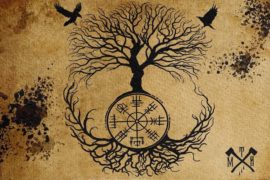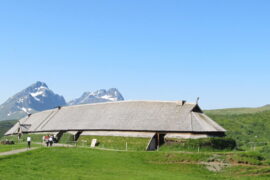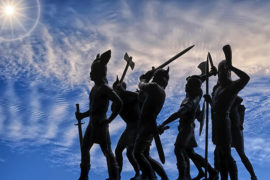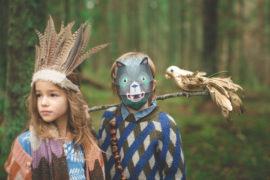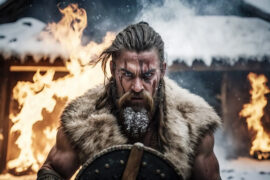Viking swords often appear in TV shows and movies. But just how important was the sword for the Vikings, and how accurate are the recent portrayals of Vikings, their swords and their wedding traditions?
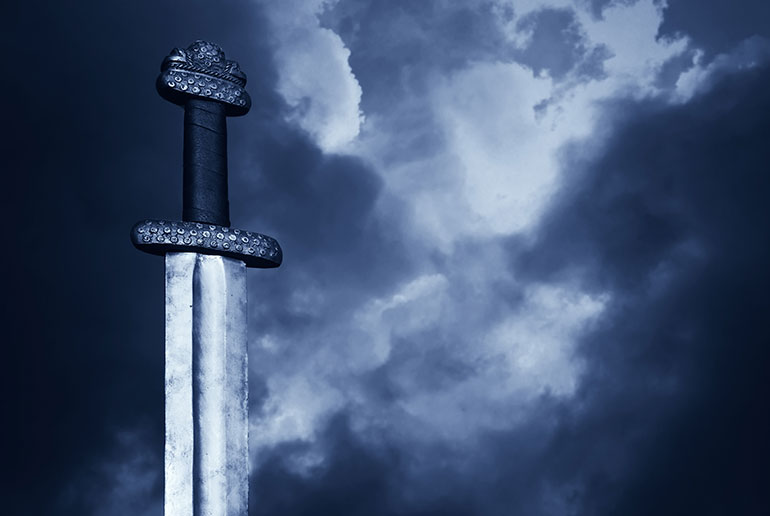
What is a Viking sword?
Viking swords are the bladed weapons that were used by the seafaring Norsemen known as Vikings during the Middle Ages.
Viking swords consisted of a hilt, made from wood or leather, and an iron or steel blade which typically had double edges, meaning they were sharp on both sides.
The Vikings used swords in battle during raids and conquests on settlements all around Europe. The swords also held a ceremonial and sentimental importance to the Viking people.
How important were swords to the Vikings?
Swords were very important to the Vikings but they were not used universally. Vikings used swords in combat as they were easy to carry and extremely sharp – in other words, they were light and effective weapons.
However, weapons like axes and spears were more commonly used in combat as they were cheaper and easier to make.
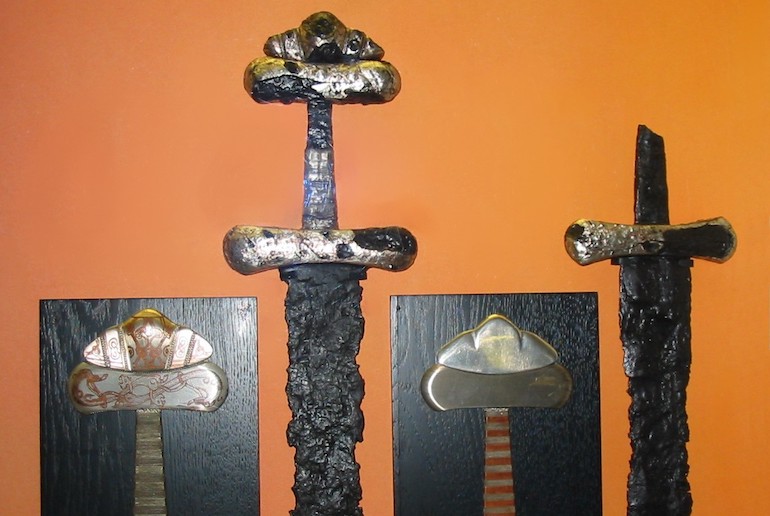
Perhaps because they were expensive to produce, swords were symbols of prestige and status for the Vikings.
The process required to craft swords was complicated and expensive: if a Viking was able to afford a sword to use in combat, it demonstrated that they were successful or came from a sophisticated lineage.
Because of their high value and prestige, Viking swords were often passed down through families as heirlooms or given as gifts.
The swords were treated with a mythical status, given nicknames and even offered as sacrifices in return for favours from the Norse gods.
There were also wedding swords, when the swords were exchanged as part of the Viking wedding ceremony, to symbolise mutual respect and the unification of two families.
What were Viking swords made from?
Early Viking swords were made from multiple materials, mainly mixes of iron and other metals. Experts think that Vikings sourced some of this iron from bogs.
This so-called ‘bog iron’ developed through the oxidisation of iron within groundwater and bog water.
The swords were produced through a process known as pattern welding – different lumps of iron were shaped, hammered, twisted and welded into a shape suitable for a blade.
Due to the different materials being used in pattern welding, swords would display bands on the blades, giving them a distinct and intriguing appearance.
A process similar to pattern welding was also used in Asia during a similar time period, hence why many old Chinese swords look similar to Viking swords.
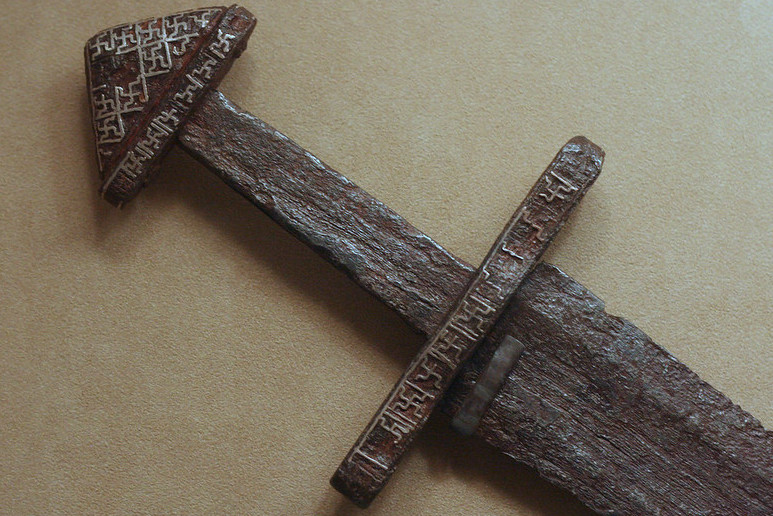
These early Viking blades were not hugely durable. They blunted very easily, some becoming so dull during battle that they served no practical use whatsoever. The swords would also sometimes bend in combat.
Later on, when smithing techniques improved towards the start of the 10th century, Viking swords were forged from a single piece of steel that was of a much higher quality.
Many of the swords referred to as Viking swords were actually imported from other areas, particularly the Frankish Empire, which covered much of modern-day France.
How do we know the Vikings used swords?
We know the Vikings used swords due to a number of important archaeological discoveries.
For example, the Ulfberht swords are a group of more than 100 swords found across Northern Europe, of which at least 75 were found in Norway, Sweden and Finland.
The name refers to an inscription found on the blades – +VLFBERHT+ – representing a shared origin, perhaps the name of the blacksmith or their company.
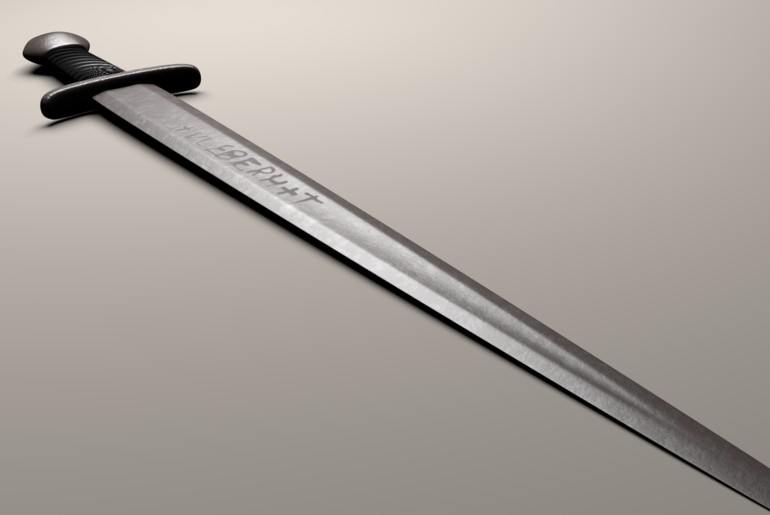
It’s thought that the Ulfberht swords were so well made that they could slice through bone and even lower quality swords.
Archaeologists still find Viking swords frequently. A recent excavation in Västmanland, Sweden unearthed two Viking age swords in a burial ground dating from around AD 600–1000.
The swords were found leaning upright, as though marking the burial site. Vikings were frequently buried with their swords to accompany them in the afterlife.
What are the typical dimensions of a Viking sword?
The total length of a sword was usually around 80–105cm. The blade itself typically measured between 70–90cm in length and around 4–6cm in width.
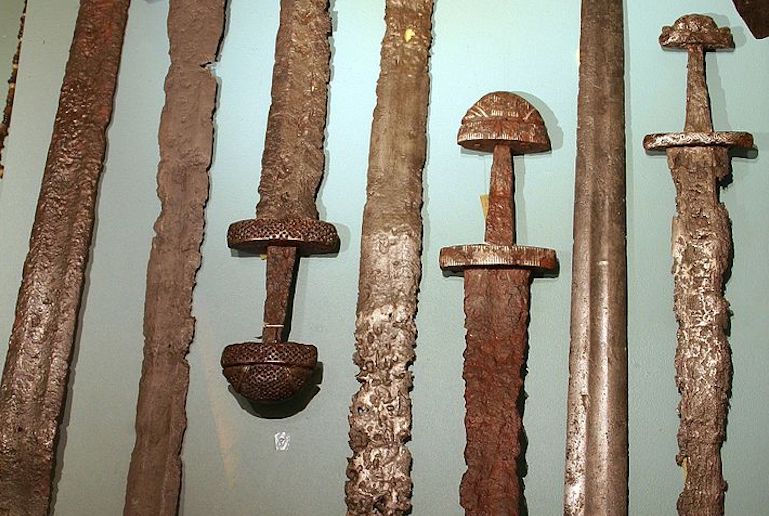
If you’re wondering how much Viking swords weighed, you might be surprised – most swords weighed around 1–1.5kg.
This relative lightness allowed Vikings to wield the swords in one hand and hold a shield in their other – the warriors did not tend to use two-handed swords.
What is the Viking Sword of Kings?
The Viking Sword of Kings is a fictional sword featured in the popular television series Vikings. The sword is predominantly ceremonial, owned by the King of the Danes.
In the show, the Viking Sword of Kings is decorated with gemstones on the hilt and a Runic inscription on the blade meaning “sword of kings”.
Although the Viking Sword of Kings is a fictional sword, Vikings did possess ceremonial swords, and those Vikings who were of higher status were able to decorate their swords – particularly the hilts – with more elaborate and lavish designs.
Is it legal to own a Viking sword?
If you want to own a replica Viking sword, whether you are allowed to or not really depends on where you live.
For example, it is legal for people aged 18 and over to own a sword in the UK as long as it does not feature a curved blade over 50cm long.
Make sure to check the rules of the country in which you are living if you are interested in owning a Viking sword.
Where can you buy real Viking swords?
Since Viking swords are of great historical interest and importance, they’re usually given or sold directly to museums.
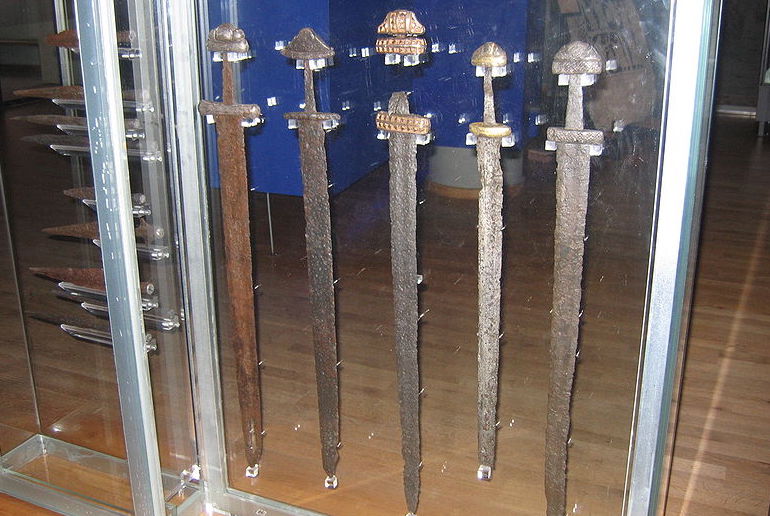
Viking swords have been sold at private auction before, but it’s a very rare occurrence – and you’ll need a good chunk of cash to be able to afford one.
As an alternative, there are many businesses that craft replica Viking swords. Although they’re not the real thing, they’re often made using the same techniques as real Viking swords.
How much is a Viking sword worth?
Some might say that real Viking swords are priceless, such is their archaeological and historical importance. However, Viking swords have occasionally been put up for private auction.
For example, in 2008 the famous British auction house Christie’s sold an Ulfberht sword for £9,375 – and that was with some of the blade missing!
Replica swords are more affordable, typically ranging from around £50 to over £200.
See also:
All you need to know about Viking weddings
What is the Vesvigir symbol and what does it mean?
What you should know about famous Vikings



